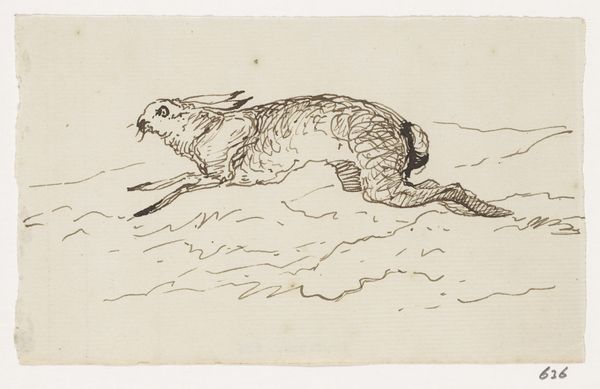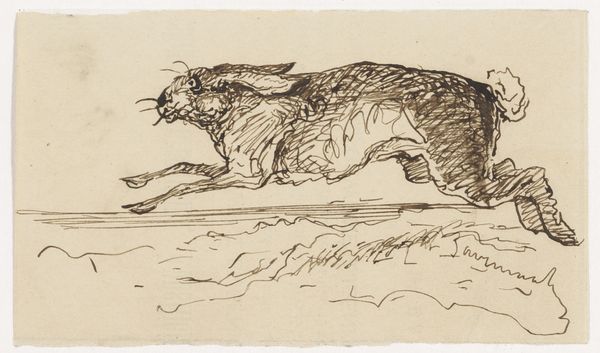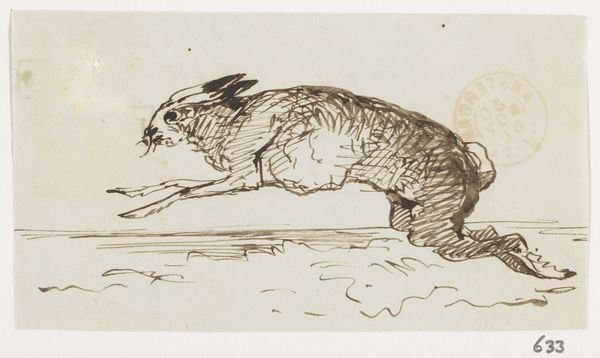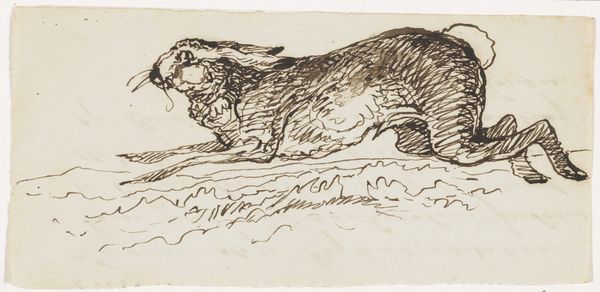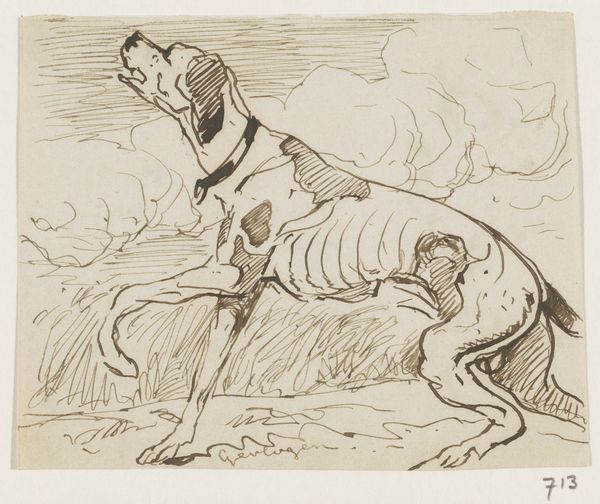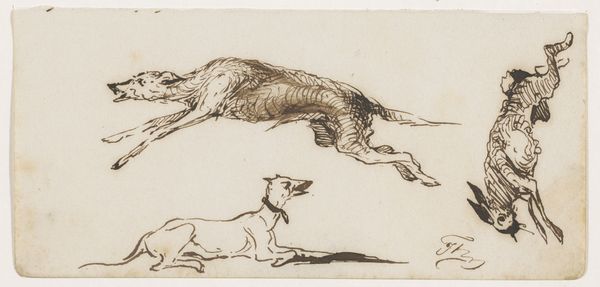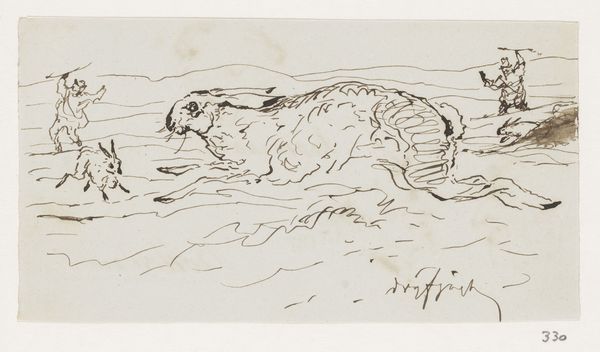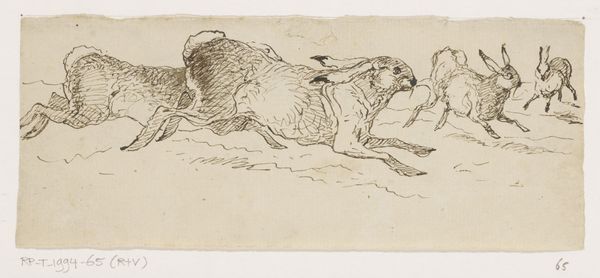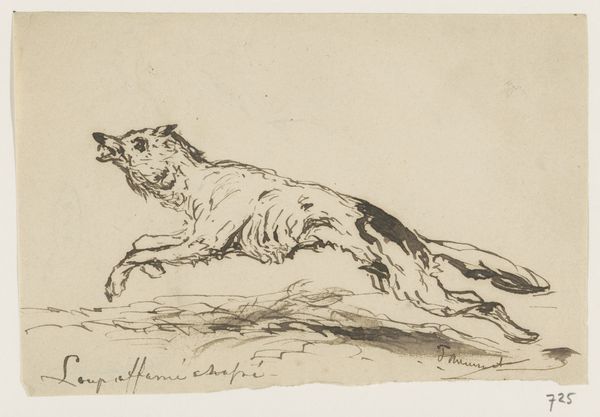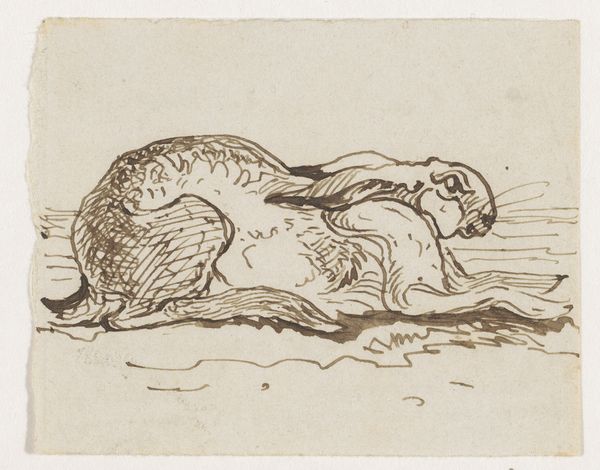
drawing, paper, ink, pen
#
drawing
#
imaginative character sketch
#
pen sketch
#
landscape
#
cartoon sketch
#
figuration
#
paper
#
personal sketchbook
#
ink
#
sketchwork
#
ink drawing experimentation
#
pen-ink sketch
#
sketchbook drawing
#
pen
#
storyboard and sketchbook work
#
sketchbook art
Dimensions: height 42 mm, width 111 mm
Copyright: Rijks Museum: Open Domain
Editor: Here we have Johannes Tavenraat's "Haas," created in 1869. It's a pen and ink drawing on paper, currently held at the Rijksmuseum. It has a raw, immediate quality. What strikes me most is the energy of the rabbit, almost frantic. What do you see in this piece? Curator: The frantic energy you're picking up on is fascinating. Think about the context of 1869. Darwin's "On the Origin of Species" had been published just a decade earlier. How might evolving ideas about the natural world – the animal, survival, instinct – seep into artistic consciousness? Do you see any influence here? Editor: That's an interesting connection. Maybe the quick, almost frantic lines of the drawing reflect a sense of nature as a struggle, a constant flight? Curator: Precisely! And beyond the biological, consider the social implications. Land enclosure movements were displacing people and disrupting rural life, further blurring boundaries between humans and animals. Does the artist’s portrayal hint at themes of dispossession and vulnerability? Is there a story embedded in the quick movements, the animal and the stark, windswept environment in the background? Editor: I hadn't considered that. It does feel like more than just a study of a rabbit. The landscape has this feeling of erasure with these marks. It’s also as if it were running *from* something, beyond our sight. Curator: The ambiguity is potent. It allows us to see in the creature reflections of contemporary social anxieties. It isn’t just an animal portrait. Editor: So, by situating the artwork in its historical context, we reveal those layers of meaning, giving greater insight into Tavenraat's anxieties and observations of 19th-century society. Curator: Absolutely. Understanding that artistic decisions are never made in a vacuum invites us to examine its reflections on socio-political currents of its time. I wonder what its view of our modern world would be.
Comments
No comments
Be the first to comment and join the conversation on the ultimate creative platform.
